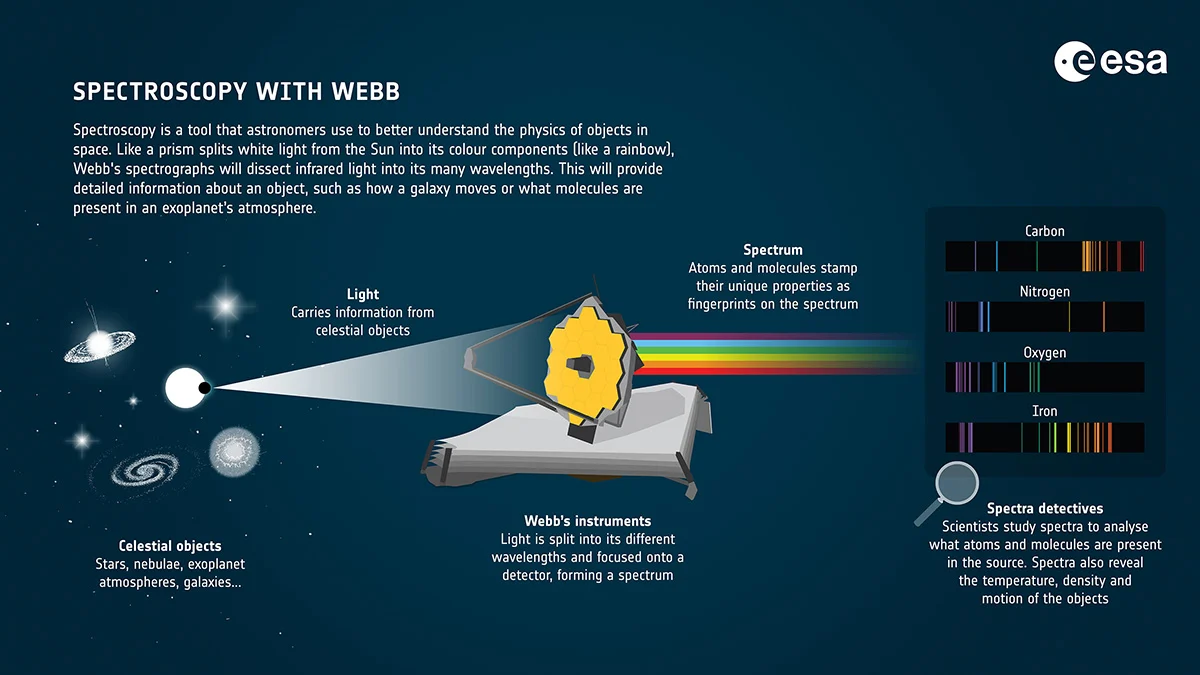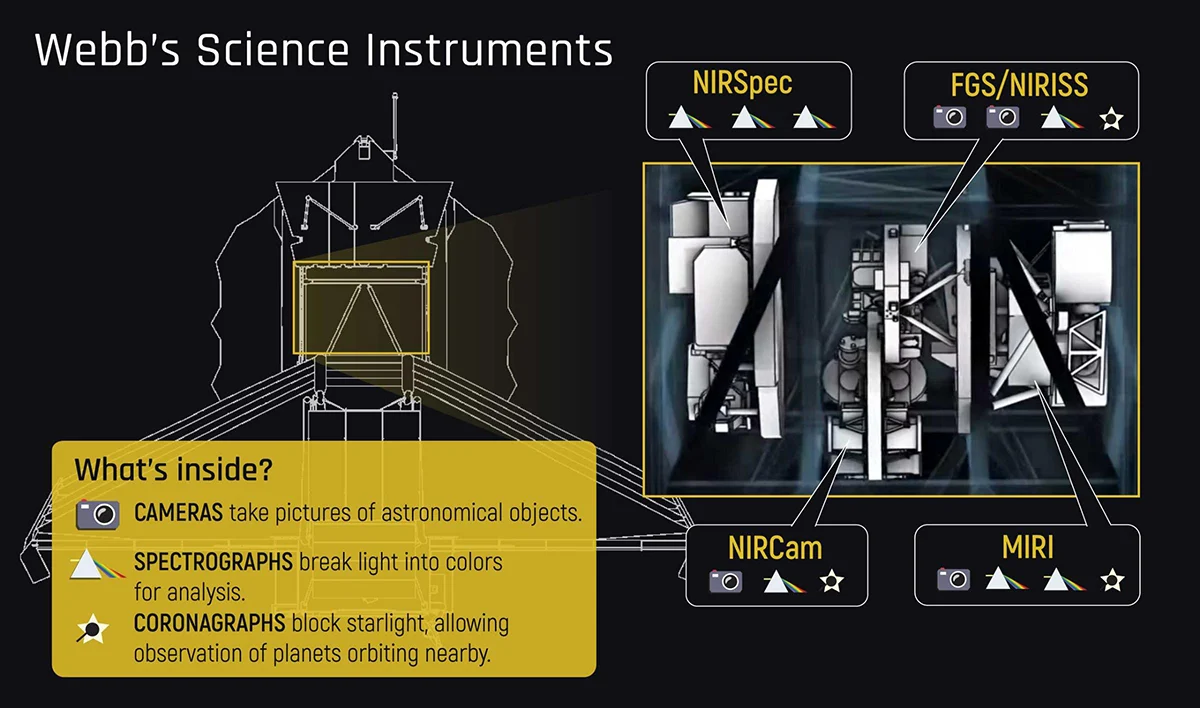The James Webb Space Telescope (JWST) is the most advanced space telescope ever launched and is making transformative contributions to the study of exoplanetary atmospheres.
Its high sensitivity and broad wavelength coverage enable unprecedented observations of exoplanetary atmospheres. JWST is optimal for transmission spectroscopy of exoplanets in the infrared with an unprecedented wavelength range from the near-infrared to mid-infrared wavelengths, especially between 0.8 and 12 microns. These capabilities are leading to first detections of various chemical species in exoplanetary atmospheres, including in hycean worlds. In particular, prominent molecules of importance for identifying hycean worlds, and sub-Neptunes in general, such as CH₄, CO₂, H₂O, NH3, and biosignatures such as DMS, CH3Cl, CS₂ and DMDS all have strong spectral features across the JWST range.
Our work involves extensive use of JWST to conduct high-precision transmission spectroscopy of promising hycean candidates. Our JWST observations in the near-infrared wavelengths (1-5 micron) have led to the first detections of carbon bearing molecules, CH₄ and CO₂, in a habitable-zone exoplanet, the candidate hycean world K2-18 b (Madhusudhan et al. et al 2023b) . This was conducted using two JWST instruments NIRISS and NIRSpec. Similar observations have also led to CH₄ and CO₂ in another hycean candidate TOI-270 d, along with additional evidence for H₂O and CS₂ (Holmberg & Madhusudhan 2024).
Spectroscopy with WEBB

JWST is equipped with a suite of advanced instruments with sensitivity across the near- to mid-infrared. Each observation can only use one instrument at a time, each of which is optimized to provide complementary data that collectively allow for comprehensive characterisation of exoplanet atmospheres.
- Near-Infrared Imager and Slitless Spectrograph (NIRISS) – the primary instrument for imaging and spectroscopic studies in the near-infrared (0.6 to 3 microns). NIRISS plays a significant role in detecting molecular features in the atmospheres of exoplanets, including signatures of CH₄, H₂O, and clouds/hazes.
- Near-Infrared Spectrograph (NIRSpec) – can detect light over wavelengths between 0.6 to 5.3 microns. However, unlike NIRISS, it cannot capture this entire wavelength window in a single observation in a way that is useful for most hycean candidates. Instead, each observation is usually restricted to a narrower range, often chosen to be between 2.9 and 5.1 microns, so as to be complementary to NIRISS. Molecules detectable in this range include major species like CH₄, CO₂, H₂O, NH3, as well as trace ones like DMS, CS₂ and others.
- Mid-Infrared Instrument (MIRI) – covers the mid-infrared wavelength range (5 to 28 microns). It is very useful in distinguishing between different trace molecules that may be present in an exoplanetary atmosphere, including potential biosignatures. It is also used to study the radiation emitted by cooler exoplanets, whose thermal emission is stronger in mid-infrared wavelengths.
Webb’s Science Instruments

Receive Email Updates
As we add news and content to the website, we'll email you to keep you updated!


